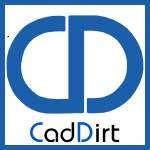RealView on a Mac...Secrets Revealed!
/When Apple switched their architecture from PowerPC to Intel in 2005 the race was on to get Windows running on Apple hardware without emulation. Since then we all know the story and anyone can get Windows running on a Mac in a number of configurations without much effort.
I have been doing this since 2006 and have run all the SolidWorks products on 4 different Apple Macbook Pros from the first Core2 MBP in 2006 to the newest Macbook Pro Retina now running Windows 8.1. Over the years I have gone to great lengths to run SolidWorks on my Mac without limits, including support for RealView. Apple has changed video cards, video card manufacturers and Microsoft has shipped 32/64 bit XP, Vista, Windows 7, Windows 8 and now Windows 8.1. Saying that the playing field has changed a bit would be an understatement to say the least!
On the first builds I had to use Riva Tuner from Guru3d.com to build a hacked or "tuned" driver that enabled the pro series features on my "gamer card" that ships with the Macbook Pro. This method was necessary to meet the requirements on the "Approved" SolidWorks video card testing site in order to unlock the RealView functionality. The other issue was simply the earlier video cards in the various Mac lines were very under powered and tuning was necessary to handle the graphics load of SolidWorks.
The good news is the hacking is over and there is a simple way to enable RealView on your Mac.
Disclaimer...
A word or warning though, as you all know SolidWorks still states very clearly on its system requirements page that:
Apple Macintosh®-based machines running Windows using Boot Camp are not supported.
I think it is also safe to say that someone whom uses a Mac has it for reasons beyond just using SolidWorks and want the ability to use the same machine for any application, Windows, Linux, or Mac. If you don't have a need to use a Mac, don't buy one. Alright. Now that that is out of the way, here are the bits you were after...
- You must be running SolidWorks 2011 or later (might work on earlier builds but have not tested prior to 2011)
- Close SolidWorks...
- Launch regedit and go to key: HKEY_CURRENT_USER\Software\SolidWorks\SolidWorks 2012\Performance\Graphics\Hardware\Gl2Shaders\NV40
- Under the NV40 key (This will work for many of the nVidia line for ATI the RV420 key works for many of them) create a new key called GeForce (you can use the full name shown in your device manager as well)
- Under this new "GeForce" key create a new DWORD (32-bit) Value called "Workarounds"
- Double click the "Workarounds" and enter a hex value "40008" (without "") (this is the setting for the nVidia card, ATI is typically 0 but it varies)
- Launch SolidWorks... (Should see the RealView gold ball now)
Keep in mind...
There are a few things that I have noticed since using this registry tune for displaying RealView.
- Editing the registry can cause OS level damage so make sure you know what you are doing...consider yourself warned!
- Typically I have to reset this reg key after installing a service pack so you may want to right click on your key and export it for a simple double click after a patch.
- This step by step is my procedure for the last 3 Macbook Pros that all were running nVidia cards so if you have the ATI version, make sure you use the RV420 key instead to add your generic key to.
- This does not work with virtual machine solutions like Parallels or VMWare Fusion (Only booted into Windows native via Bootcamp).
I get 20-30 emails a year asking me how to do this and I wanted to share it with all of you that are using a Mac and running SolidWorks. It's understandable that SolidWorks has to limit the scope of support to exclude this configuration from its supported list (as they do for some builds of Windows). However, I can personally say that I have been able to successfully do this since 2006 and my Mac laptops have been some of the fastest systems I have owned to date.
I have spoken to hundreds of people that are already running SolidWorks on their Macs via Bootcamp or even using Parallels or Fusion to get their jobs done. Whether you have a Mac for "religious" reasons or require the platform for similar reasons as I do (hardware quality and application preferences only on OSX), this solution will make the SolidWorks experience in Bootcamp at par with most Windows-based laptops. If you run into any issues trying to get this to work, please leave a comment or drop me a line and I'd be happy to help out. ~Lou






